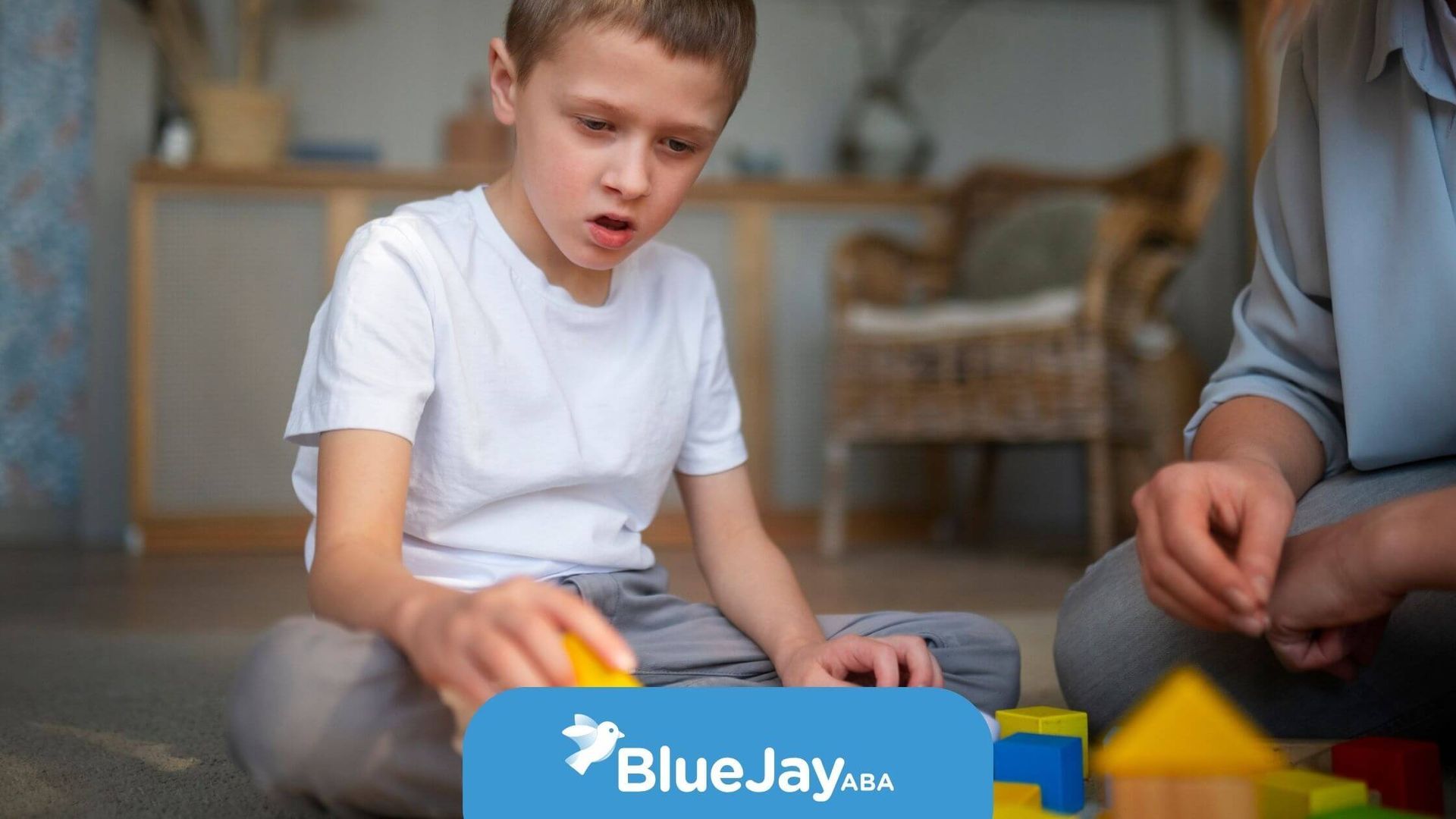Essential Features of Center-Based ABA Therapy for Effective Autism Treatment
Key Highlights
- Center-based ABA therapy provides a structured environment where tailored therapy programs address the individual needs of each child with autism spectrum disorder.
- Skilled behavior analysts design customized treatment plans focused on skill acquisition, behavior management, and social interaction within therapy sessions.
- ABA therapy emphasizes positive reinforcement to promote socially significant behaviors and improve quality of life.
- Individualized assessments and progress monitoring ensure therapy effectiveness and help track progress.
- Collaboration with families and the use of technology enhance the comprehensive approach offered in ABA therapy centers.
ABA therapy is often a lifeline for children with autism, helping them overcome challenges and develop new skills. One of the most effective ways to deliver this therapy is through a center-based curriculum, where therapy sessions are tailored to each child’s unique needs.
I recall working with a child whose parents were initially unsure about home-based ABA therapy and even center-based setting. After a few months, they saw a remarkable difference in Max’s behavior. With structured routines, personalized goals, and continuous support, Max made incredible strides in his social and communication skills.
This success story is one of many, and it truly showcases the power of a carefully designed ABA therapy curriculum.
Let's explore the essential features of these curriculums and why they’re so effective.
Foundations of Center-Based ABA Therapy
ABA therapy focuses on understanding and improving specific behaviors, and in a center-based setting, it’s all about creating a structure that helps children reach their goals.
How Does ABA Work in a Center?
In a center, children are assessed individually, with their strengths and challenges taken into account. Therapists use the insights gathered from these assessments to design a personalized treatment plan that focuses on areas like communication, social skills, and behavior management.
The idea is to create clear, measurable goals that will guide the child’s progress over time.
Therapists also continuously monitor and adjust the plan to ensure it stays relevant and effective for each child.
Core Principles Guiding ABA Practices
ABA therapy is rooted in some key principles, with positive reinforcement being a standout. This means that children are rewarded for demonstrating positive behaviors, encouraging them to repeat those actions and learn new, socially appropriate skills.
Why Positive Reinforcement Matters
Positive reinforcement is a proven technique in ABA therapy. By rewarding desirable behaviors, therapists help children learn what’s expected of them, whether it’s following a routine, using words to ask for something, or interacting with others in a positive way.
In a center, structured programs make it easier to track these behaviors and goals, ensuring that children are consistently supported throughout their therapy sessions.
Essential Components of a Center-Based ABA Curriculum
A center-based ABA curriculum is built around individualized assessments and structured lessons, all designed to help children improve their skills in a focused environment.
Individualized Assessment and Goal Setting
At the heart of ABA therapy is the individualized assessment. Behavior analysts assess each child through observations, discussions with parents, and specific tools designed to identify strengths, weaknesses, and areas for growth.
From there, therapists set clear, measurable goals that will guide the child’s treatment plan. These goals are revisited and adjusted as necessary, ensuring that children are always moving toward their next milestone.
Structured Teaching Environments
One of the key advantages of center-based ABA therapy is the structured environment. This consistency allows children to focus on their goals without unnecessary distractions.
Therapists use various techniques, such as Discrete Trial Training (DTT), to break down complex tasks into manageable steps. This helps children stay focused and progress steadily toward mastering new skills.
Skill Development Areas Targeted in ABA Centers
Center-based ABA therapy focuses on helping children develop important skills in areas like communication, social interaction, daily routines, and problem-solving.
Communication and Language Skills
Communication is essential in everyone’s life, and it’s even more important for children with autism. ABA centers help kids improve their ability to express themselves, whether through speech, gestures, or alternative communication methods like apps or devices.
By focusing on both receptive and expressive language, ABA therapy helps children better understand others and share their thoughts, feelings, and needs more effectively.
Socialization and Play Skills
Social skills are crucial for children to build relationships and interact in a group setting. ABA therapy uses structured play to teach children how to take turns, share, and interact appropriately with others.
These skills are then generalized to other social situations outside the therapy center, helping children build friendships and engage with peers.
Behavior Management Strategies
Behavior management is a key part of ABA therapy. In a center-based setting, therapists use positive reinforcement and other strategies to address and reduce challenging behaviors, such as aggression or self-injury.
Using Reinforcement to Change Behavior
Reinforcement is a central tool in behavior management. By rewarding children for positive behaviors, therapists encourage them to replace unwanted behaviors with more appropriate ones. This not only improves behavior in therapy but also helps children generalize those skills to real-life situations.
The beauty of ABA therapy is that it’s data-driven, meaning that therapists track progress and adjust plans to make sure goals are being met.
Data-Driven Instruction and Progress Monitoring
Data collection is an essential part of ABA therapy. It allows therapists to monitor progress, adjust plans, and ensure that the therapy is effective.
Ongoing Data Collection
Therapists track data in real time, using a variety of tools such as direct observation, standardized assessments, and digital tools. This helps keep the focus on each child’s progress and makes it easier to modify therapy plans as needed.
Continuous data collection allows therapists to make timely adjustments and ensure that the therapy is as effective as possible.
Collaboration and Family Involvement
Family involvement is critical to the success of ABA therapy. When parents are actively involved, the lessons learned in the therapy center can be reinforced at home, helping the child generalize their skills to different environments.
Parent Training and Participation
Parent training is an important part of the process. By attending training sessions, parents learn practical strategies for supporting their child at home. They can also observe therapy sessions, which helps them better understand how to reinforce the skills their child is learning in the center.
Conclusion
A center-based ABA therapy curriculum is tailored to meet the specific needs of each child, with an emphasis on behavior analysis, skill development, and progress monitoring. This approach, combined with structured environments and family involvement, helps children with autism improve their skills in a comprehensive and supportive way.
As technology continues to advance, ABA centers are increasingly equipped to track progress and provide personalized care.
At Blue Jay ABA, we’re dedicated to helping children with autism reach their full potential through personalized ABA therapy. If you're looking for a comprehensive, structured program that will make a real difference in your child's life, we’re here to help.
Reach out to us today for a free consultation and take the first step toward supporting your child’s growth and development.
Frequently Asked Questions
What makes center-based ABA therapy different from home-based therapy?
Center-based ABA therapy provides a distraction-free, structured environment where children can focus on learning and practicing new skills. Unlike home-based therapy, children in centers also have opportunities for group interactions and specialized resources.
How is an individualized ABA curriculum developed for each child?
Behavior analysts create individualized treatment plans based on a child’s specific needs. The curriculum is designed to address strengths and challenges and includes clear, measurable goals that evolve as the child progresses.
What qualifications should ABA center staff have?
ABA center staff should be certified behavior analysts and trained behavior technicians who are experienced in ABA therapy. Their expertise ensures that therapy is effective and tailored to each child’s needs.
Sources:
- https://www.autismspeaks.org/expert-opinion/what-discrete-trial-training
- https://iidc.indiana.edu/irca/articles/discrete-trial-teaching-what-is-it.html
- https://www.umassglobal.edu/blog-news/what-is-applied-behavior-analysis-exploring-aba-therapy-careers.
- https://www.autismspeaks.org/applied-behavior-analysis
- https://www.autismspeaks.org/tool-kit-excerpt/helpful-strategies-promote-positive-behavior
Related Posts






